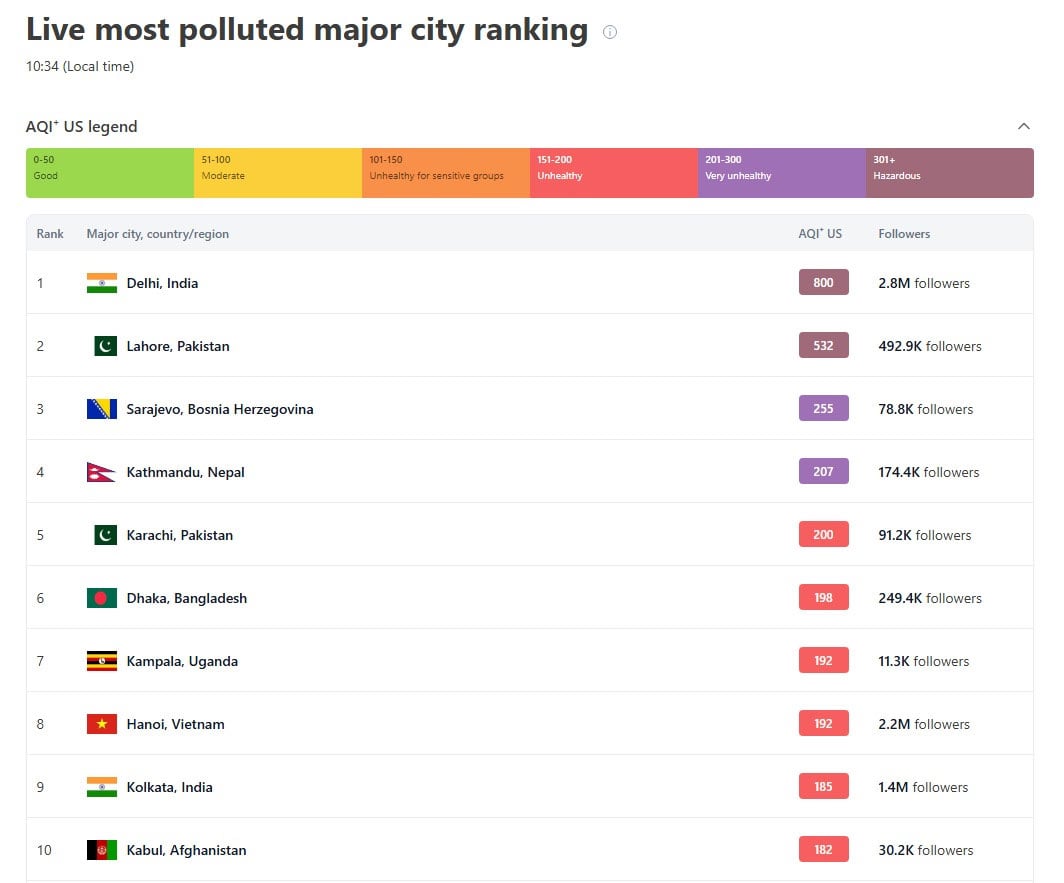Lahore's air quality has once again plummeted into the "hazardous" category, with the city recording an AQI of 532 on Tuesday, marking the first time in nearly three weeks that the air quality has reached such dangerous levels.
The surge in pollution comes despite the provincial government's ongoing efforts to combat smog, including drastic measures like partial lockdowns.
According to data from IQAir, Lahore emerged as the second most polluted city in the world on Tuesday, trailing only New Delhi, whose AQI reached a staggering 800 around 10:34 am. Lahore's AQI of 532 places it in the "hazardous" range, a level deemed extremely dangerous for human health.
This latest spike in pollution levels follows a period of relative improvement, as Lahore had been largely free from hazardous air quality since November 28, 2024. However, thick smog has continued to blanket the city, exacerbating an already dire situation. For weeks, Lahore’s residents have struggled with the effects of toxic air, which has reached alarming levels as the winter season sets in.

Lahore, home to over 14 million people, has faced the brunt of this growing air pollution crisis. Authorities have warned that the city’s air quality has been steadily deteriorating in recent years, driven by a combination of factors, including cold weather, vehicular emissions, and the burning of crop residue in neighboring India.
The situation is further compounded by the pollution crisis in New Delhi, which remains at the top of the list of the world’s most polluted cities. Pakistani officials have often blamed the heavy smog in Punjab on stubble burning across the border, which contributes significantly to the toxic air quality in Lahore.
Despite efforts to mitigate the damage, such as restricting industrial activity and implementing restrictions on vehicle emissions, the city’s residents are facing the stark reality of yet another winter season of intense pollution. The government’s actions, including a temporary partial lockdown, have provided little relief, as pollution levels have once again surged to dangerous levels.
Meanwhile, as the cold weather sweeps across Pakistan, Karachi, too, has seen a marked deterioration in its air quality. On Tuesday, the coastal city registered an AQI of 200, placing it in the "unhealthy" range, according to IQAir rankings. The worsening air quality in Karachi highlights the nationwide challenge of tackling pollution, which has become a year-round concern in many parts of the country.
Experts have raised alarm over the severe health risks posed by such high levels of air pollution. Exposure to hazardous air quality can lead to respiratory issues, heart disease, and other long-term health complications, particularly for vulnerable populations such as children, the elderly, and those with preexisting health conditions.


























